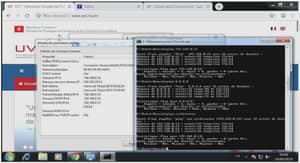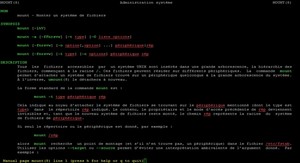Linux NFS−HOWTO
Copyright (c) <2002> by Tavis Barr, Nicolai Langfeldt, Seth Vidal, and Tom McNeal. This material may be distributed only subject to the terms and conditions set forth in the Open Publication License, v1.0 or later (the latest version is presently available at http://www.opencontent.org/openpub/). This document is provided without any guarantees, including merchantability or fitness for a particular use. The maintainers cannot be responsible if following instructions in this document leads to damaged equipment or data, angry neighbors, strange habits, divorce, or any other calamity. This will never be a finished document; we welcome feedback about how it can be improved. As of February 2002, the Linux NFS home page is being hosted at http://nfs.sourceforge.net. Check there for mailing lists, bug fixes, and updates, and also to verify who currently maintains this document.
If you are able to translate this document into another language, we would be grateful and we will also do our best to assist you. Please notify the maintainers. NFS on Linux was made possible by a collaborative effort of many people, but a few stand out for special recognition. The original version was developed by Olaf Kirch and Alan Cox. The version 3 server code was solidified by Neil Brown, based on work from Saadia Khan, James Yarbrough, Allen Morris, H.J. Lu, and others (including himself). The client code was written by Olaf Kirch and updated by Trond Myklebust. The version 4 lock manager was developed by Saadia Khan. Dave Higgen and H.J. Lu both have undertaken the thankless job of extensive maintenance and bug fixes to get the code to actually work the way it was supposed to. H.J. has also done extensive development of the nfs−utils package. Of course this dedication is leaving many people out. The original version of this document was developed by Nicolai Langfeldt. It was heavily rewritten in 2000 by Tavis Barr and Seth Vidal to reflect substantial changes in the workings of NFS for Linux developed between the 2.0 and 2.4 kernels. It was edited again in February 2002, when Tom McNeal made substantial additions to the performance section. Thomas Emmel, Neil Brown, Trond Myklebust, Erez Zadok, and Ion Badulescu also provided valuable comments and contributions.
The Network File System (NFS) was developed to allow machines to mount a disk partition on a remote machine as if it were on a local hard drive. This allows for fast, seamless sharing of files across a network. It also gives the potential for unwanted people to access your hard drive over the network (and thereby possibly read your email and delete all your files as well as break into your system) if you set it up incorrectly. So please read the Security section of this document carefully if you intend to implement an NFS setup.This HOWTO is intended as a complete, step−by−step guide to setting up NFS correctly and effectively. Setting up NFS involves two steps, namely configuring the server and then configuring the client. Each of these steps is dealt with in order. The document then offers some tips for people with particular needs and hardware setups, as well as security and troubleshooting advice.This HOWTO is not a description of the guts and underlying structure of NFS. For that you may wish to read Linux NFS and Automounter Administration by Erez Zadok (Sybex, 2001). The classic NFS book, updated and still quite useful, is Managing NFS and NIS by Hal Stern, published by O’Reilly & Associates, Inc. A much more advanced technical description of NFS is available in NFS Illustrated by Brent Callaghan.
This document is also not intended as a complete reference manual, and does not contain an exhaustive list of the features of Linux NFS. For that, you can look at the man pages for nfs(5), exports(5), mount(8), fstab(5), nfsd(8), lockd(8), statd(8), rquotad(8), and mountd(8). It will also not cover PC−NFS, which is considered obsolete (users are encouraged to use Samba to share files with Windows machines) or NFS Version 4, which is still in development.



